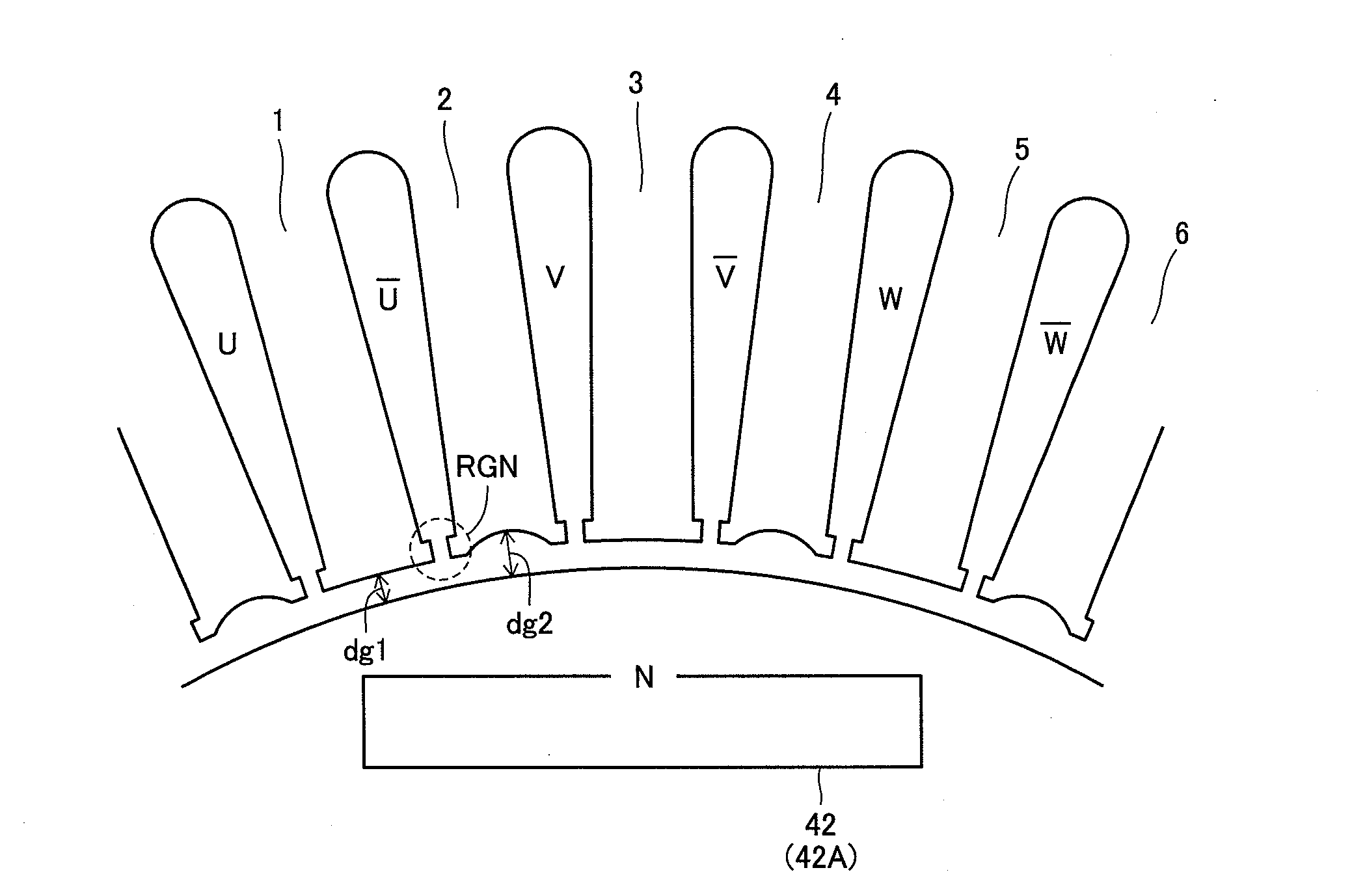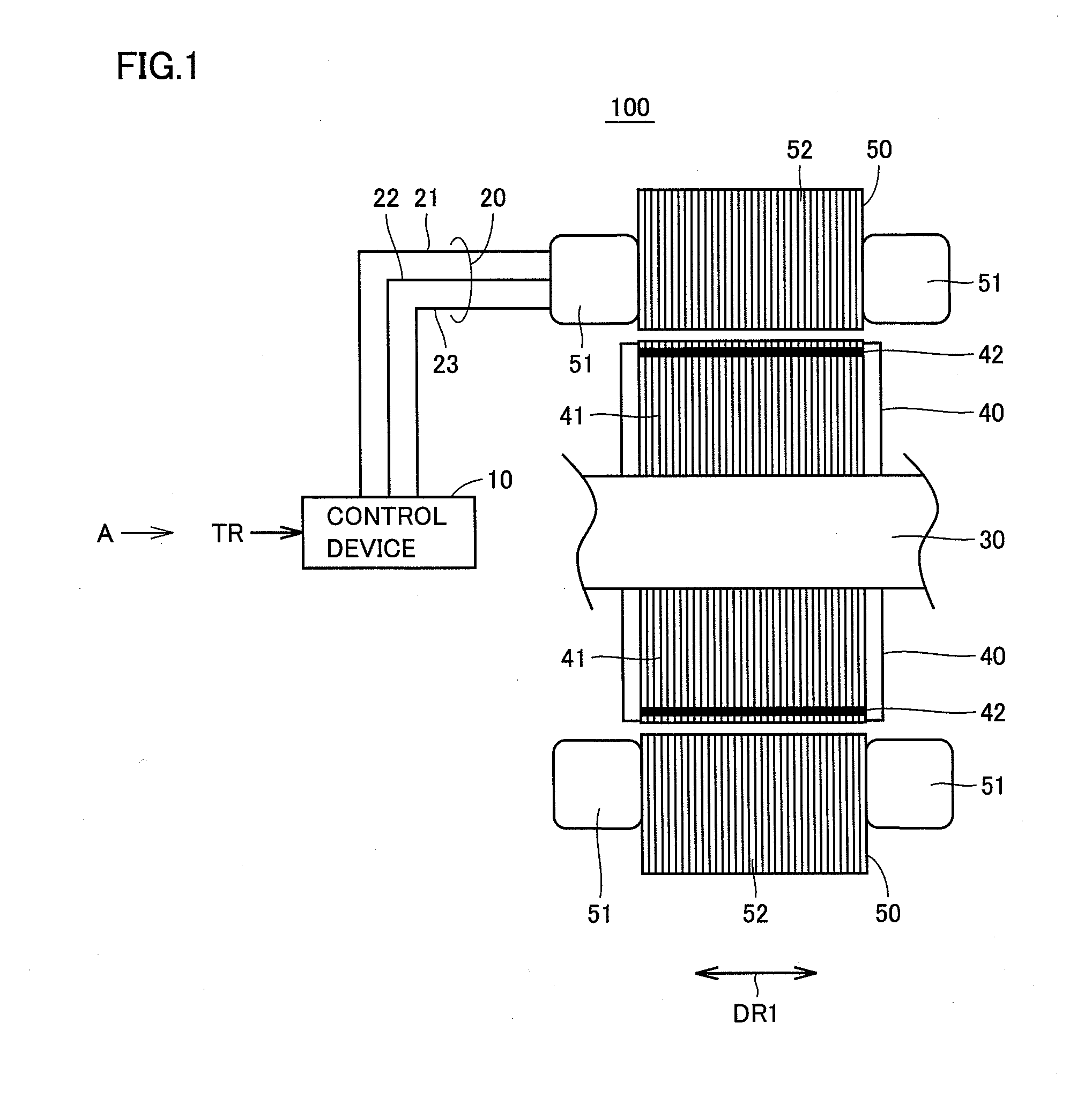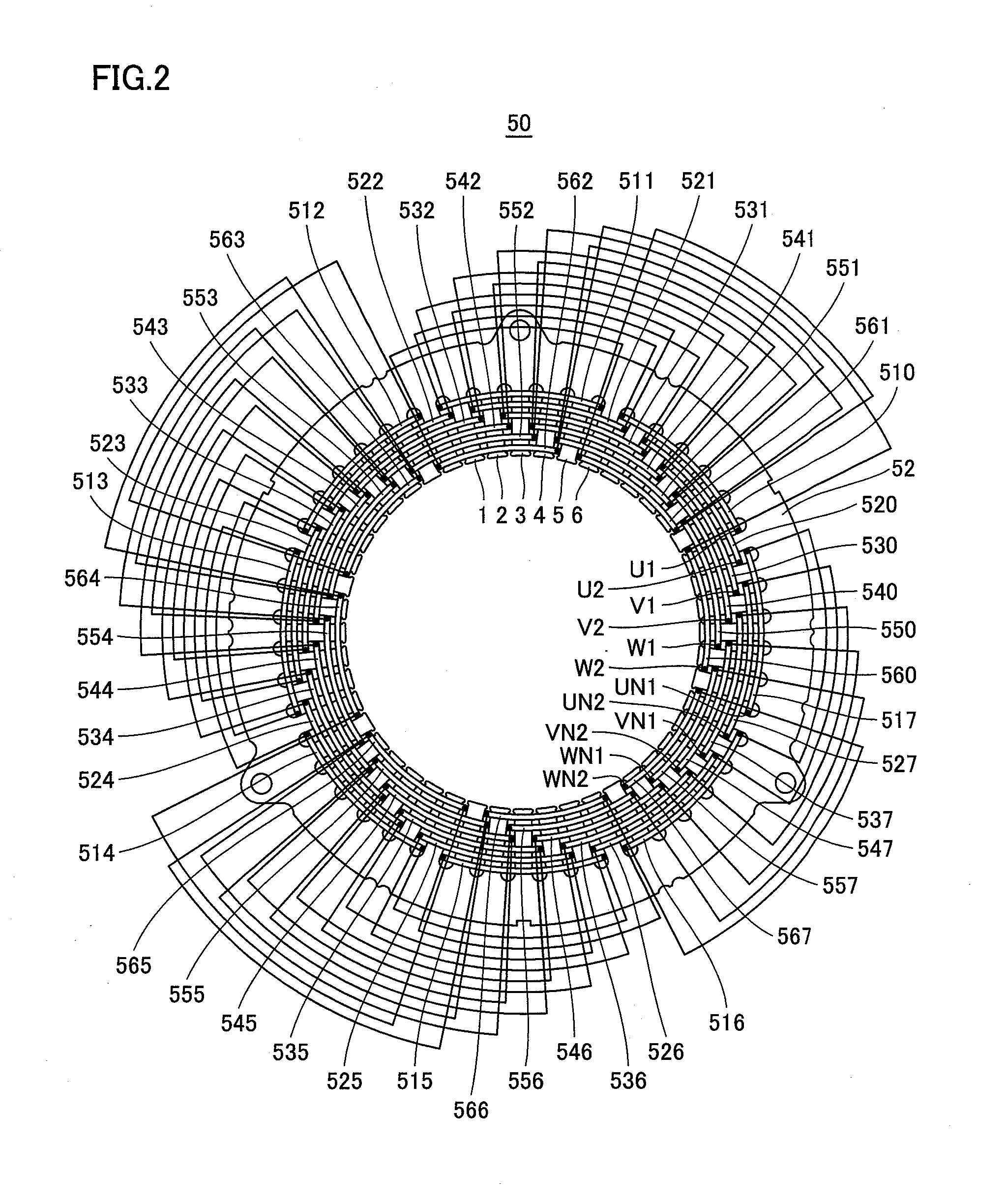Rotating electric machine
a technology of rotating electric machines and electric motors, which is applied in the direction of windings, dynamo-electric components, and magnetic circuit shapes/forms/constructions, etc., can solve the problems of large electromagnetic noise of harmonics, large disturbance of rider in vehicles, and increase in electric noise generated during driving, so as to reduce electromagnetic noise, suppress stator vibration, and increase magnetic resistance
- Summary
- Abstract
- Description
- Claims
- Application Information
AI Technical Summary
Benefits of technology
Problems solved by technology
Method used
Image
Examples
first embodiment
[0035]FIG. 1 is a sectional view of a rotating electric machine according to a first embodiment of the present invention.
[0036]Referring to FIG. 1, a rotating electric machine 100 of the present invention includes a control device 10, a 3-phase cable 20, a shaft 30, a rotor 40, and a stator 50.
[0037]Rotor 40 includes a rotor core 41 and a magnet 42. Stator 50 includes a stator coil 51, and a stator core 52.
[0038]Control device 10 receives a torque control value TR to be output by rotating electric machine 100 from an ECU (Electrical Control Unit) provided external to rotating electric machine 100 to generate a motor control current MCTLI for providing torque according to the receive torque control value TR, and provides the generated motor control current MCTLI to stator coil 51 of stator 50 via 3-phase cable 20.
[0039]3-phase cable 20 connects control device 10 and stator coil 51. 3-phase cable 20 includes a U-phase cable 21, a V-phase cable 22, and a W-phase cable 23. Shaft 30 is i...
second embodiment
[0093]FIG. 11 is a diagram to describe a stator core of a rotating electric machine according to a second embodiment of the present invention.
[0094]Referring to FIG. 11, stator core 52B is configured such that the tooth length in the circumferential direction differ between same-phase-intermediate tooth 1 (or 3, 5) and different-phase-intermediate tooth 2 (or 4, 6). Specifically, the teeth are formed such that the length of different-phase-intermediate tooth 2 in the circumferential direction (corresponding to 12 in the drawing) is larger than the length of same-phase-intermediate tooth 1 in the circumferential direction (corresponding to 11 in the drawing). Since the length of each tooth in the direction of the rotational shaft is equal, the cross sectional area of different-phase-intermediate tooth 2 is smaller than the cross sectional area of same-phase-intermediate tooth 1.
[0095]In view of the magnetic resistance of the teeth region being in inverse proportion to the cross secti...
PUM
 Login to View More
Login to View More Abstract
Description
Claims
Application Information
 Login to View More
Login to View More - R&D
- Intellectual Property
- Life Sciences
- Materials
- Tech Scout
- Unparalleled Data Quality
- Higher Quality Content
- 60% Fewer Hallucinations
Browse by: Latest US Patents, China's latest patents, Technical Efficacy Thesaurus, Application Domain, Technology Topic, Popular Technical Reports.
© 2025 PatSnap. All rights reserved.Legal|Privacy policy|Modern Slavery Act Transparency Statement|Sitemap|About US| Contact US: help@patsnap.com



